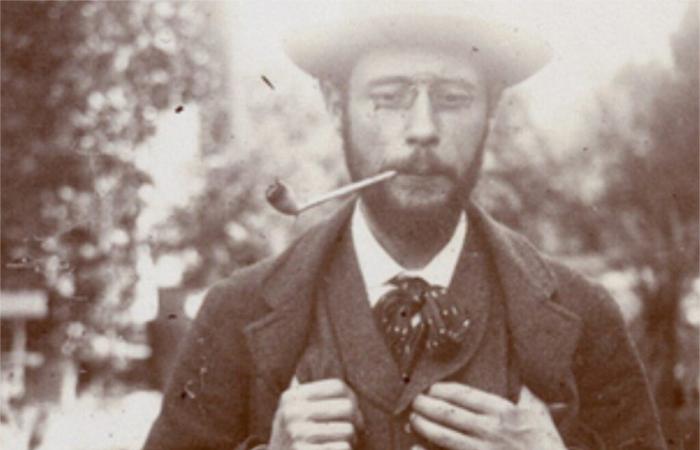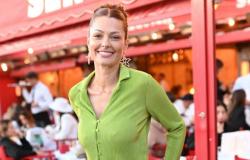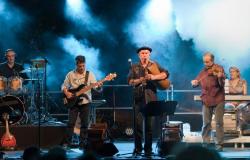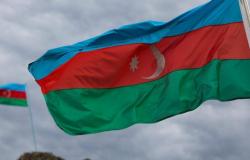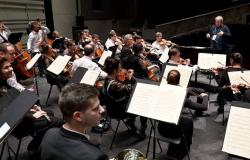Par
Vernon Editorial
Published on
Nov 10 2024 at 12:26 p.m
See my news
Follow Le Démocrate Vernonnais
In the monthly section proposed by Le Démocrate vernonnais, local historian Jean-Paul Lefebvre-Filleau evokes this November the refusal of the famous impressionist painter ofYour Pierre Bonnard to paint the portrait of Marshal Pétain.
Born October 3, 1867 in Fontenay-aux-Roses (Hauts-de-Seine), Pierre Bonnard, painter, decorator, illustrator, lithographer, engraver and sculptor, friend of Claude Monet, is considered by his contemporaries as “the last of impressionists ».
Driven by a gentle, discreet and solitary character but good company, full of humor with bouts of cheerfulness and enthusiasm, Pierre Bonnard is sometimes inclined to melancholy. He rarely confides in those close to him.
Friendship with Claude Monet
Graduated in law in 1888, lawyer in 1889, he went to the courtroom mainly to sketch lawyers rather than to plead. But it is painting that interests him. He quickly abandoned his legal career.
In the 1900s, Bonnard often visited Normandie, notably in Criquebeuf-sur-Seine (Eure) and Vasouy (Calvados). A lover of nature, he acquired, in 1912, a small house which he named “Ma Roulotte”, located at 41, bis route des Andelys, in Vernon (Eure). This modest dwelling has a garden with lush vegetation and a running balcony which offers a panoramic view of the Seine, where he likes to canoe, and of the surrounding countryside which he walks every morning whatever the weather, with its changing lights. It was his property until his death in 1947.
Claude Monet frequented the “Roulotte”, despite their age difference and their differences on composition or outdoor painting. Monet inquires about the work of his younger brother, expressing his opinion with a gesture or a smile. Bonnard always remains deferential towards the master of Giverny.
The dazzling light of the South of France does not leave him indifferent either. In February 1926, he bought a villa (today the Pierre Bonnard museum), in Le Cannet (Alpes-Maritimes), 29, avenue Victoria, which he named “Le Bosquet”. From then on, he divided himself between his Parisian apartment and his properties in Vernon and Le Cannet.
Patriotism and republicanism
A little-known aspect of the personality of Pierre Bonnard, “painter of light and color”, is his patriotism and his republicanism. The French defeat in the summer of 1940 surprised him in his villa in Le Cannet and affected him enormously, according to his great-nephew Antoine Terrasse (1928-2013), critic and art historian.
He then decided to stay in his villa in Le Cannet, located in an unoccupied area, and to engage in passive but determined resistance. Thus, in 1941, he refused to join the French painters and sculptors who responded favorably to an invitation from Joseph GoebbelsGerman Minister of People’s Education and Propaganda.
He immediately understands the trap set for him: under the pretext of exhibiting works of French art in Berlin, he does not want to serve as a propaganda agent for the Nazi regime.
The resistant posture of the painter
The same year, in November, Abel Bonnard (1883-1968), member of the National Council of the Vichy governmentnicknamed by the resistance Abetz Bonnard, given the close relations he maintained with the ambassador of the Third Reich Otto Abetz, in Paris, asked his namesake to kindly paint the portrait of the head of the “so-called French State”, as General de Gaulle proclaimed.
Not wanting to associate his name with the Vichy regime, Pierre Bonnard, who has no family ties with Abel Bonnard, found a subterfuge to evade this official request: he demanded numerous posing sessions and compensation in kind. that Abetz Bonnard cannot obtain from the old Marshal….
Pierre Bonnard’s resistant posture is also characterized by his refusal to sell his paintings and participate in exhibitions, as long as France is occupied by the Germans.
Jean Moulin and Pierre Bonnard, a discreet friendship
The only gallery where he shows himself is the one where Jean Moulin, alias Max, head of National Council of Resistanceopened in Nice, 22, rue de France. This Romanin Gallery allows Max, feeling more and more watched, to create a cover for himself, in order to justify, to the German and Vichy police, his numerous trips, under the appearance of looking for paintings to sell and contacting painters or picture dealers.
In December 1942, he purchased, under his real name, a former bookstore called “La Boîte à bouquin”, which he had designed by the decorator Jean Cassarini (1910-2005).
The Romanin Gallery was inaugurated with great fanfare on February 9, 1943, in the presence of the prefect of the Alpes-Maritimes, his general secretary, the mayor and personalities from Nice.
The meeting of the painter of light and color and the cantor of the Resistance is not a coincidence.
Indeed, the two men maintain a discreet friendship, especially since Moulin is, in his spare time, an excellent draftsman and watercolorist.
The leader of the French Resistance even plans to write a biography of Pierre Bonnard after the war. Max’s arrest by the Gestapo, in Caluire, June 21, 1943, followed by his death, will cause this beautiful project to disappear.
Epilogue
Pierre Bonnard’s last stay in Paris took place from October 7 to 20, 1946. On this occasion, he visited his nephew Charles Terrasse (1893-1982), curator of the Château de Fontainebleau. Upon his return to the “Bosquet”, his health deteriorated rapidly. He died on January 23, 1947.
Jean-Paul Lefebvre-Filleau
Practical information
Our historical chronicler will dedicate his works at the 4th Christmas of the book of Vexin-sur-Epte, village hall of Tourny (Eure), on December 1, from 2 p.m.
Follow all the news from your favorite cities and media by subscribing to Mon Actu.

